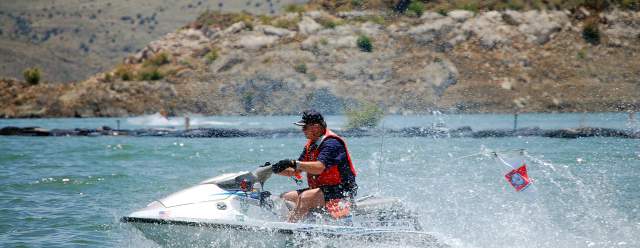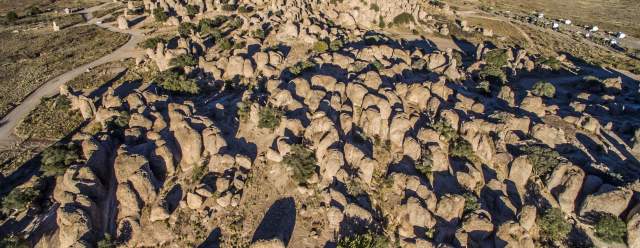THE VERY LARGE ARRAY
One of the world's premier astronomical radio observatories, consists of 27 radio antennas in a Y-shaped configuration on the Plains of San Agustin fifty miles west of Socorro, New Mexico. Each antenna is 25 meters (82 feet) in diameter. The data from the antennas is combined electronically to give the resolution of an antenna 36km (22 miles) across, with the sensitivity of a dish 130 meters (422 feet) in diameter.
HISTORY OF THE VLA:
1972 August: approved by Congress
1973 April: construction started
1975 September 22: first antenna put in place
1976 February 18: first fringes
1980: formal dedication of the VLA
The total cost was $78,578,000 (in 1972 dollars), roughly $1 per taxpayer at the time; the project was completed nearly one year early, and within the allotted budget.
HOW DOES IT WORK?
The VLA is an interferometer; this means that it operates by multiplying the data from each pair of telescopes together to form interference patterns. The structure of those interference patterns, and how they change with time as the earth rotates, reflect the structure of radio sources on the sky: we can take these patterns and use a mathematical technique called the Fourier transform to make maps.
WHO USES IT?
The VLA is used primarily by astronomers from around the world. It's also occasionally used for atmospheric/weather studies, satellite tracking, and other miscellaneous science.
LOCATION:
Plains of San Agustin, west of Socorro, New Mexico.
latitude = 34°04'43.497" north
longitude = 107°37'03.819" west
elevation = 2124 m (6970 ft)
SIZE:
Each antenna: 25 m (82 ft) in diameter, 230 tons.
The array: there are four configurations: A array, with a maximum antenna separation of 36 km; B array -- 10 km; C array -- 3.6 km; and D array -- 1 km. The telescopes are switched between these configurations every four months or so.
RESOLUTION:
0.04 arcseconds. The resolution of the VLA is set by the size of the array -- up to 36 km (22 miles) across. At our highest frequency (43 GHz) this gives a resolution of 0.04 arcseconds: sufficient to see a golf ball held by a friend 150 km (100 miles) away. Of course, very few golf balls contain high-power radio transmitters...
MISC. ANTENNA INFORMATION:
Slew rates: 40° per minute in azimuth, 20° per minute in elevation
Minimum elevation angle: 8° above the horizon
Frequency coverage: 74 to 50,000 MHz (400 to 0.7 cm)
USEFUL LINKS:
The National Radio Astronomy Observatory
National Radio Astronomy Observatory (NRAO) Image Gallery












